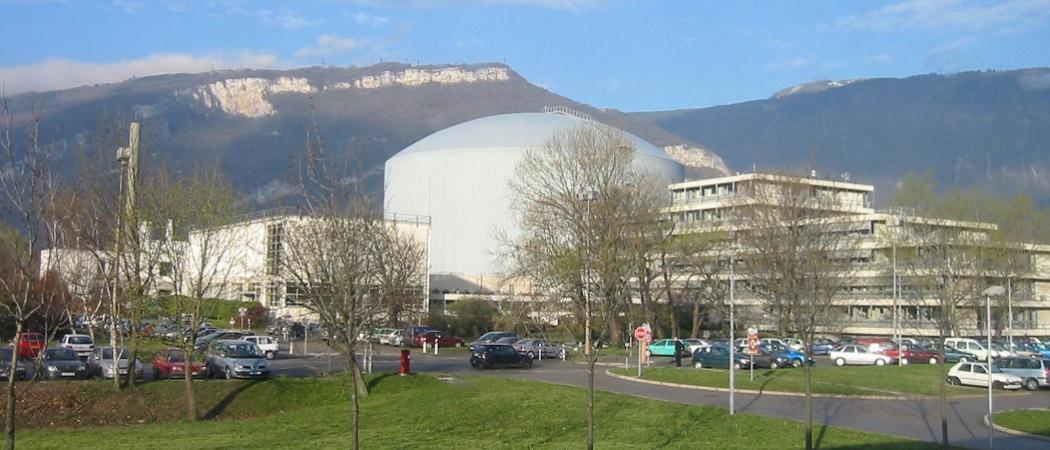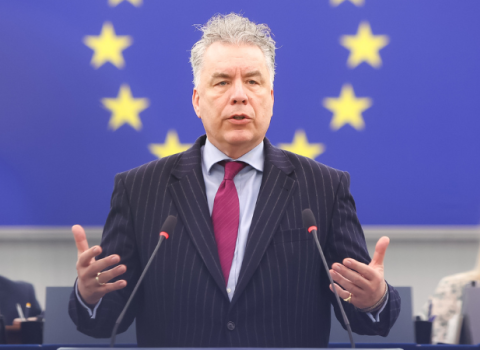The scientific director of the ILL says EU should contribute more to large research infrastructures, to strengthen the European Research Area

The Institut Laue-Langevin in Grenoble, France, is one of the most intense sources of research neutrons in the world. Photo: Wurzeller.
The EU should have a fund for helping its newer – and poorer – member states with weaker science and innovation systems join international research facilities, says Mark Johnson, scientific director at Institut Laue Langevin (ILL) in Grenoble.
Such support would increase the science and innovation performance of those countries, while the facilities themselves would gain from the expertise of researchers working in countries with long-standing scientific traditions.
“The EU could play a bigger role in funding these world-class, world-leading research institutions,” Johnson told Science|Business. “It’s a mission for Europe.”
The ILL is one of the world’s largest research facilities where scientists have access to a neutron scattering source to analyse the structure a broad range of materials. In August, the facility welcomed its newest member, Slovenia, after years of negotiations. Slovenia is now one of the 11 scientific member countries funding the ILL, in addition to the three founding countries: France, Germany, and the UK.
The ILL says the partnership will enable Slovenia’s researchers to contribute to tackling global threats, such as the coronavirus pandemic and climate change, and allow industry to access powerful tools for R&D. Slovenian scientists have been invited to submit proposals and start doing research as soon as possible.
Access to the facility will enable researchers to conduct experiments needed in the development of drugs, sustainable energy sources and our understanding of the universe, all of which is not sufficiently covered by national facilities.
According to Gregor Anderluh, director of Slovenia’s National Institute of Chemistry, the ILL membership will help the Slovenian scientific community to participate in European research efforts and contribute to world-leading research. “The world-class instruments and expertise at the ILL offers great potential to enhance the innovation and discovery being driven by Slovenian researchers,” said Anderluh.
But the details of the Slovenian deal took a long time to iron out. Delays were caused in part because of the 2008 financial crisis. Talks began in 2003, but they were suddenly disrupted by budget squeezes introduced by the Slovenian government. As happened in many other EU member states, it took Slovenia a few years to get back on track and raise R&D funding to pre-crisis levels so it can afford to send its researchers to test the infrastructure at the ILL and forge a deal.
To help shorten these timeframes, Johnson says, the EU should step in and fund such cooperation opportunities for countries wanting to join large research infrastructures in times of crisis.
At the ILL, beam time is paid by users. If, for example, Romania were to join they could pay first and see if it fits its needs. Or the ILL could provide access so Romanian scientists can see how things are and hope they join.
Johnson says the EU should help fund that initial process. “It’s not for the UK or France or Germany to pay for Romanian scientists to use the ILL.”
Bridging the gap
Less than half of EU member states are members at the ILL, but Johnson says expanding membership to the other member states would help them improve their research and innovation system but also make a significant contribution to international scientific cooperation.
The institute has been working together with Romanian scientists on various occasions and would like to formalise through the Romanian government. “But these are time-consuming processes,” said Johnson.
If the European Commission is to make a significant contribution to large research infrastructures and help them attract new members, it would need a large budget.
The ILL recently ran a project that allocated €500,000 to cover the costs of access for researchers coming from non-member countries such as Portugal, Norway, Slovenia and Romania. The money was spread across five years, which means that the €100,000 spent yearly on the scheme is a far cry from the ILL’s total budget of €90 million. “This is something that we need to grow,” said Johnson.
“It’s difficult to expect countries where there is not a culture of using research infrastructures to suddenly invest millions to give their scientists these opportunities,” said Johnson.
According to him, even under normal circumstances, it takes some time to put in place an international membership agreement and an additional form of EU funding would help research infrastructures get some countries through the door. Until such a programme is available, Johnson says he would encourage other countries to follow the Slovenian example and start engaging with the ILL in smaller projects and testing activities which could then evolve into larger membership deals. “We can do everything we can to push the door open,” said Johnson.





 A unique international forum for public research organisations and companies to connect their external engagement with strategic interests around their R&D system.
A unique international forum for public research organisations and companies to connect their external engagement with strategic interests around their R&D system.